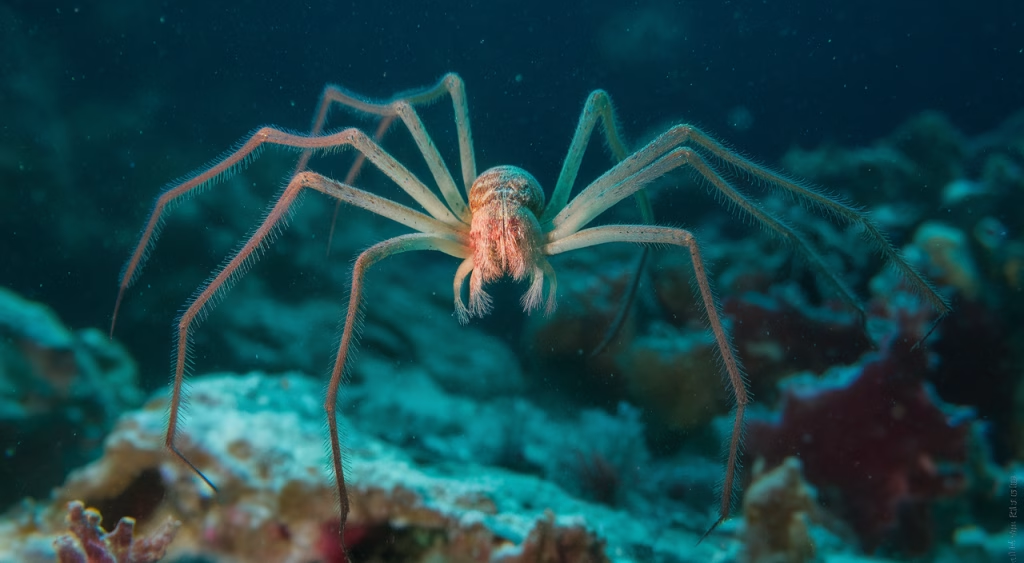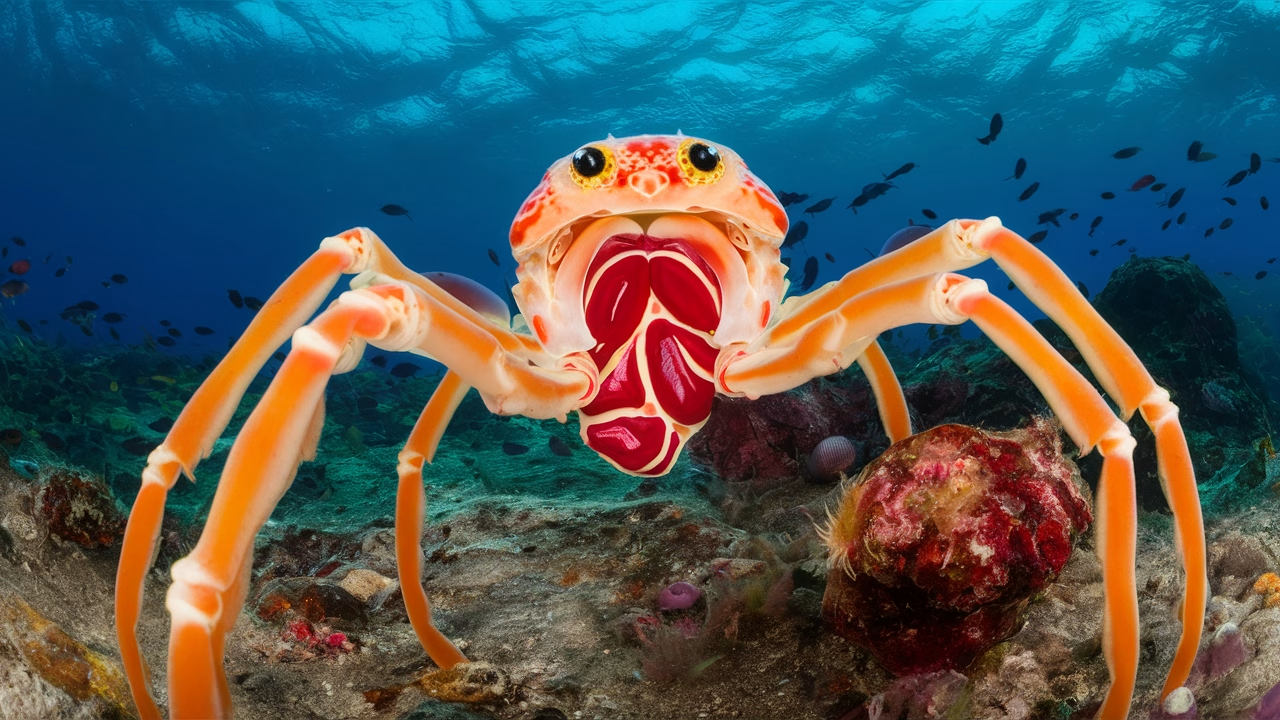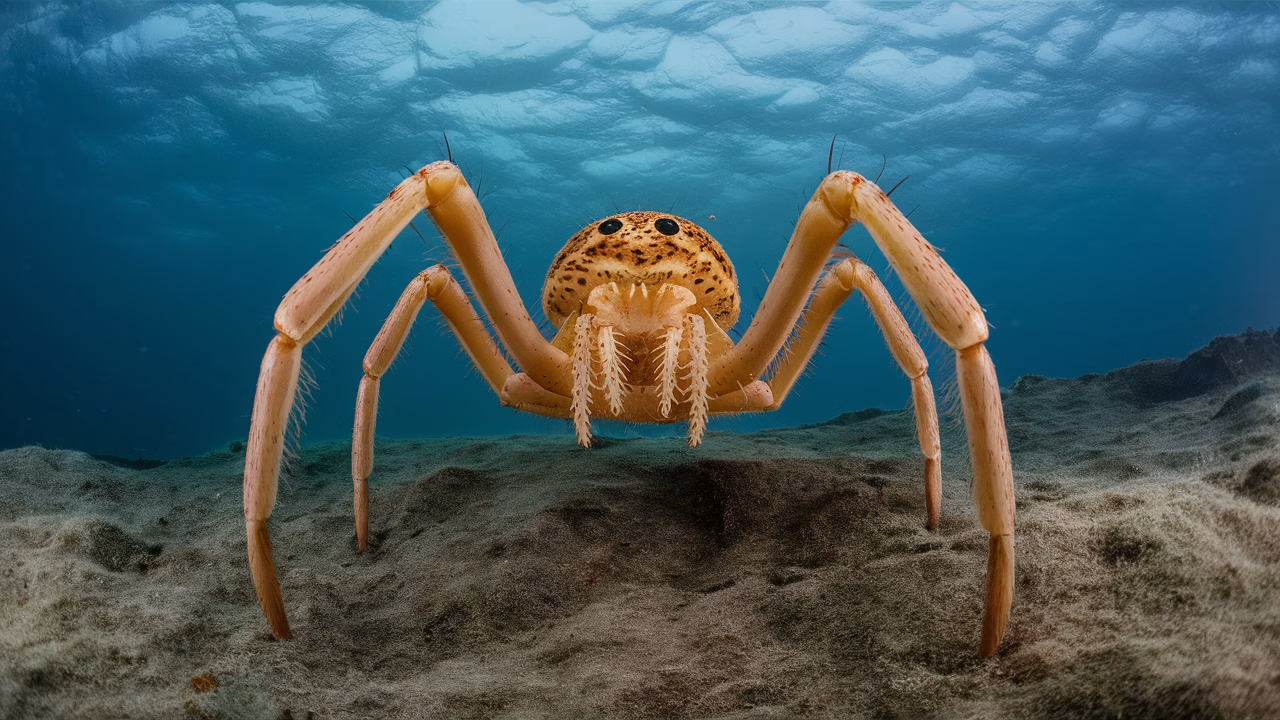How do sea spiders pump blood using their guts?
Sea spiders have captivated scientists with an evolutionary twist that revolutionizes our understanding of blood circulation: instead of hearts doing the hard work, their digestive system—specifically their guts—pumps blood throughout their bodies. This unique sea spider blood pumping process helps circulate hemolymph (the invertebrate equivalent of blood) when traditional heart activity proves insufficient.
- Function over form: Their circulatory system isn’t centered around the heart.
- Gut-powered circulation: Muscle contractions in the digestive tract help move hemolymph.
- Evolutionary significance: Offers insights into how marine arthropods evolved in oxygen-limited environments.
- Why it matters: These creatures push the boundaries of what’s biologically possible.
Understanding Sea Spiders
Ever stumbled upon a creature that looks like a walking spider but lives in the oceans? If that gave you the chills, don’t worry—you’re not alone. Sea spiders, or Pycnogonids, are marine arthropods that appear like something from a sci-fi illustration. With long skeletal legs and tiny bodies, these invertebrates haunt sea beds and coral reefs from the shallowest tides to the darkest oceanic trenches.
Despite their name, sea spiders aren’t true spiders. They’re more like distant arthropod cousins with a particularly bizarre evolutionary history. Their spindly appearance isn’t just for show—it’s a survival trait in oceans where oxygen is sparse and efficient design means the difference between life and death.
One of the most stunning discoveries about sea spiders is their revolutionary approach to blood circulation. When we think about blood pumping, we automatically think heart. But these remarkable creatures toss that rulebook overboard. Their guts do the pumping—and that’s where cutting-edge research discoveries meet the extraordinary.
The Unique Circulatory System of Sea Spiders
Gut-driven blood flow: A biological oddity
Inside sea spiders, the story of blood circulation takes a surprising turn that challenges everything we thought we knew about marine biology. Where you’d expect a strong, central heart to move hemolymph, researchers discovered a relatively weak one. Instead, groundbreaking sea spider research findings reveal that the rhythmic contractions of their gut play the primary role in moving fluid throughout their intricate bodies.
This sea spiders circulatory system is especially visible in larger species. The gut extends throughout the leg canals of the sea spider’s famously long limbs. With every wave-like contraction of the gut, hemolymph is systematically pushed toward extremities and tissues, delivering nutrients and oxygen while collecting metabolic waste.
The research discovery was truly groundbreaking. In laboratory observations using fluorescent dyes and motion tracking, scientists found that when sea spiders moved their digestive tracts—through feeding or digestion—the physiological ripple effect circulated blood more effectively than their weak heartbeat ever could.
| Circulatory Feature | Typical Arthropod | Sea Spider |
|---|---|---|
| Primary pump | Heart | Digestive tract (gut) |
| Blood type | Hemolymph | Hemolymph |
| Oxygen distribution | Usually via tracheae or gills | Direct gas exchange across cuticle |
Research Discoveries and Implications
So, what does this mean for science? First, these sea spider research findings shake up our understanding of how blood circulation can evolve in complex organisms. Not every animal needs a powerful heart—in fact, sea spiders demonstrate that alternative blood pumping mechanisms work remarkably well. For marine biologists like myself, this opens doors to rethinking how low-oxygen marine environments have shaped anatomical innovation.
Here’s a scenario that fascinates researchers: you’re studying deep-sea fauna and find relatively low oxygen levels, yet organisms are thriving. In sea spiders, scientists discovered that their larger surface area relative to volume, thanks to their legs, allows for effective oxygen diffusion right through their exoskeleton—no need for lungs or gill-like spiracles. When you combine that with their gut-driven hemolymph circulation, you’ve got a survival machine perfectly tuned for deep-sea living.
This research discovery also has ripple effects—pun intended—for biomechanics, phylogenetics, and how we frame “normal” evolutionary pathways in arthropods. It underscores that nature isn’t restricted by conventional blood pumping norms; it’s driven by survival innovation.
Evolutionary Biology of Sea Spiders
Ever wondered how such a peculiar sea spiders circulatory system came to be? The origins of sea spiders reach back over 500 million years. Some evolutionary biologists argue they are closely related to chelicerates (which include spiders and horseshoe crabs), while others see them as a separate ancient lineage altogether.
Their primitive blood circulation hints at ancestral traits that modern arthropods might have shed in favor of fast-paced, oxygen-guzzling lifestyles. Sea spiders, instead, followed a slow but steady evolutionary path—developing a method of moving oxygen and nutrients that required less machinery and more elegance in simplicity.
This divergence also explains why they’ve survived so long. Their sea spider blood pumping process is low-maintenance yet highly specialized—a satisfying paradox that continues to intrigue scientists studying marine arthropods.
Adaptations for Survival
Body shape, behavior, and biomechanical brilliance
Let’s take a moment to appreciate the sea spider’s evolutionary toolkit. Everything about these marine arthropods screams “efficiency.”
- Thin exoskeleton: Enables gas exchange directly across the body.
- Long, hollow legs: Maximize surface area for diffusion and blood circulation.
- Slow metabolism: They don’t burn energy quickly, reducing oxygen demand.
- Minimalist organ systems: Less internal complexity helps streamline function.
These traits aren’t just helpful—they’re critical for surviving in low-temperature, low-oxygen environments such as the poles or abyssal zones. In fact, some sea spiders can grow to dinner-plate size near Antarctica—a phenomenon tied to oxygen availability and lower metabolic rates that support their unique blood pumping mechanisms.
Conclusion: The Intriguing World of Sea Spiders
So where does all of this leave us? If nothing else, sea spiders remind us how flexible life really is. From a blood circulation standpoint, they’re rewriting biological expectations. The lack of reliance on a heart—replaced instead by gut contractions in their revolutionary sea spiders circulatory system—forces us to broaden our view of what it means to be alive and well-designed in the oceanic world.
As research continues, so does our fascination with these marine arthropods. What else lies hidden in the gut-powered pulses of these otherworldly creatures? All we know for sure is that sea spiders have survived eons not because of a perfect design—but because of a brilliant adaptation in blood pumping that defies conventional wisdom.
Frequently Asked Questions
Do sea spiders have a heart?
Yes, but it’s weak and not primarily responsible for blood circulation. Their gut contractions do most of the blood pumping.
How do sea spiders survive without gills or lungs?
They exchange oxygen directly through their thin exoskeleton, especially the legs, which offer a high surface area.
How big can sea spiders get?
Some Antarctic species grow up to 30 cm across, thanks to higher oxygen availability in cold waters.
Are sea spiders related to land spiders?
Not directly. Sea spiders belong to a distinct, ancient arthropod lineage, separate from terrestrial spiders.
Where can sea spiders be found?
They inhabit oceans worldwide—from shallow tide pools to extreme deep-sea environments.
Why do sea spiders pump blood with their guts?
Because their heart is too weak to do the job alone. Gut contractions effectively propel hemolymph throughout their body instead.
Can we learn anything from sea spiders for applied science?
Absolutely! Their minimalist, efficient circulatory system offers inspiration for biomechanical systems and even robotics.





